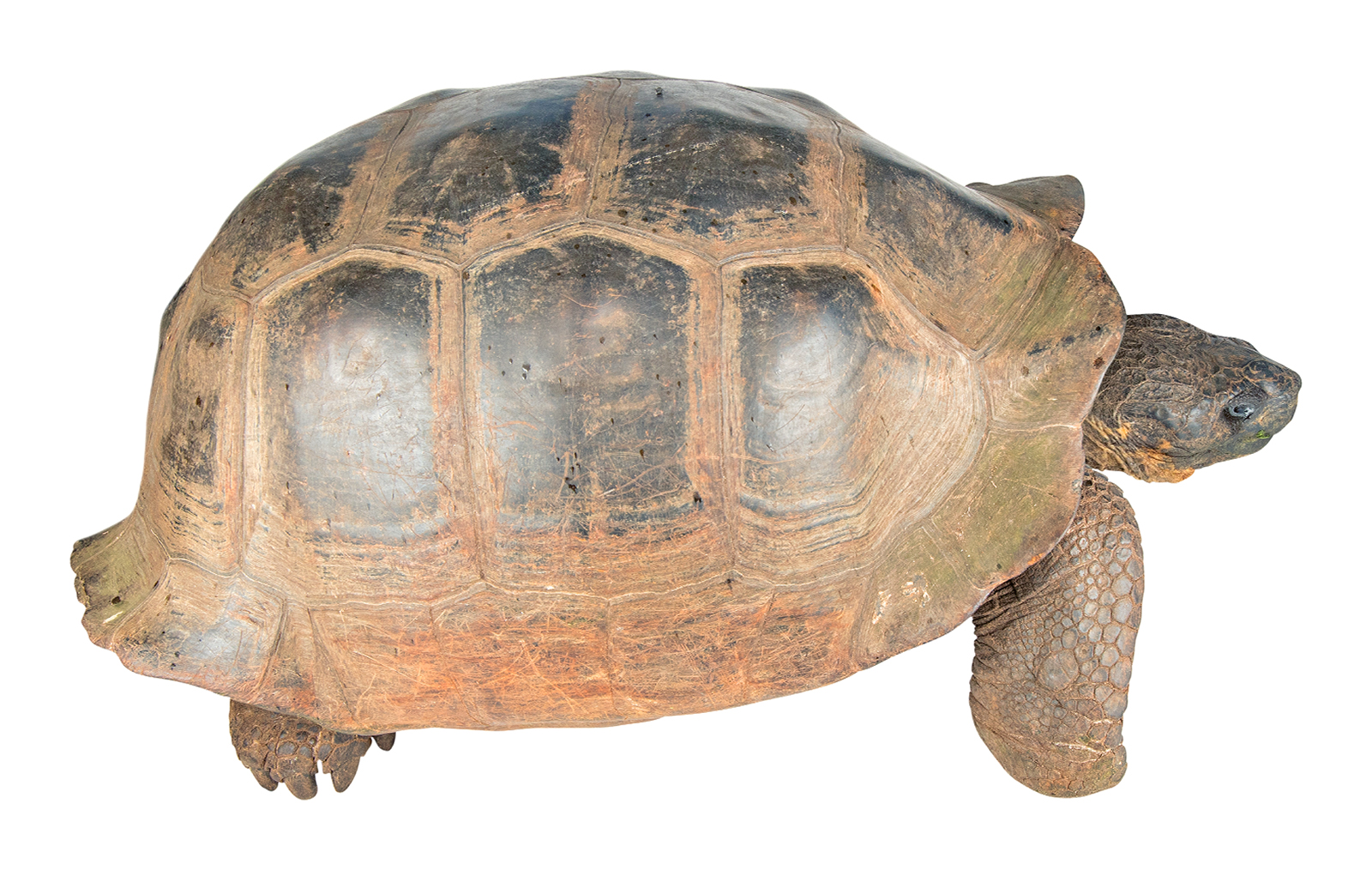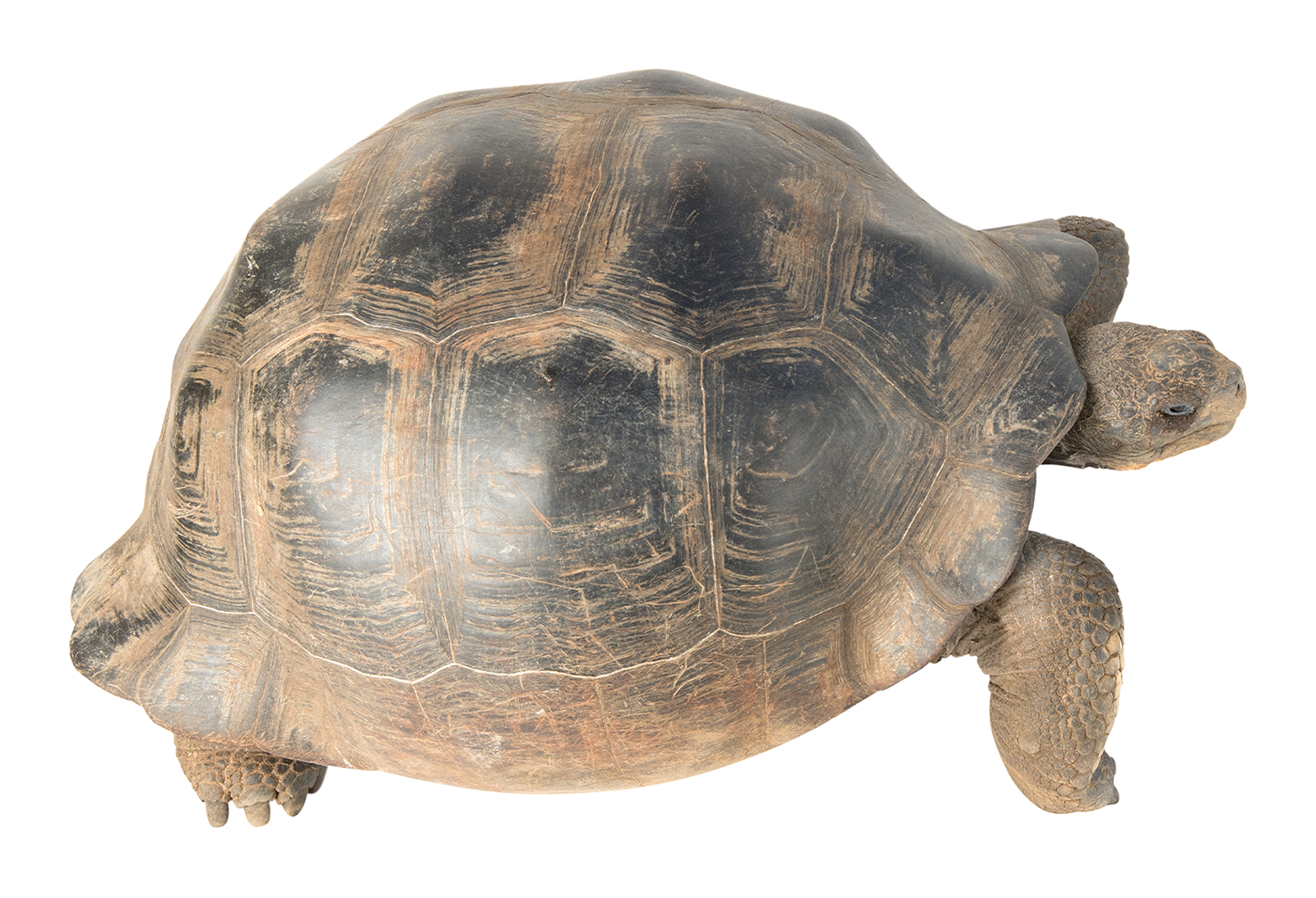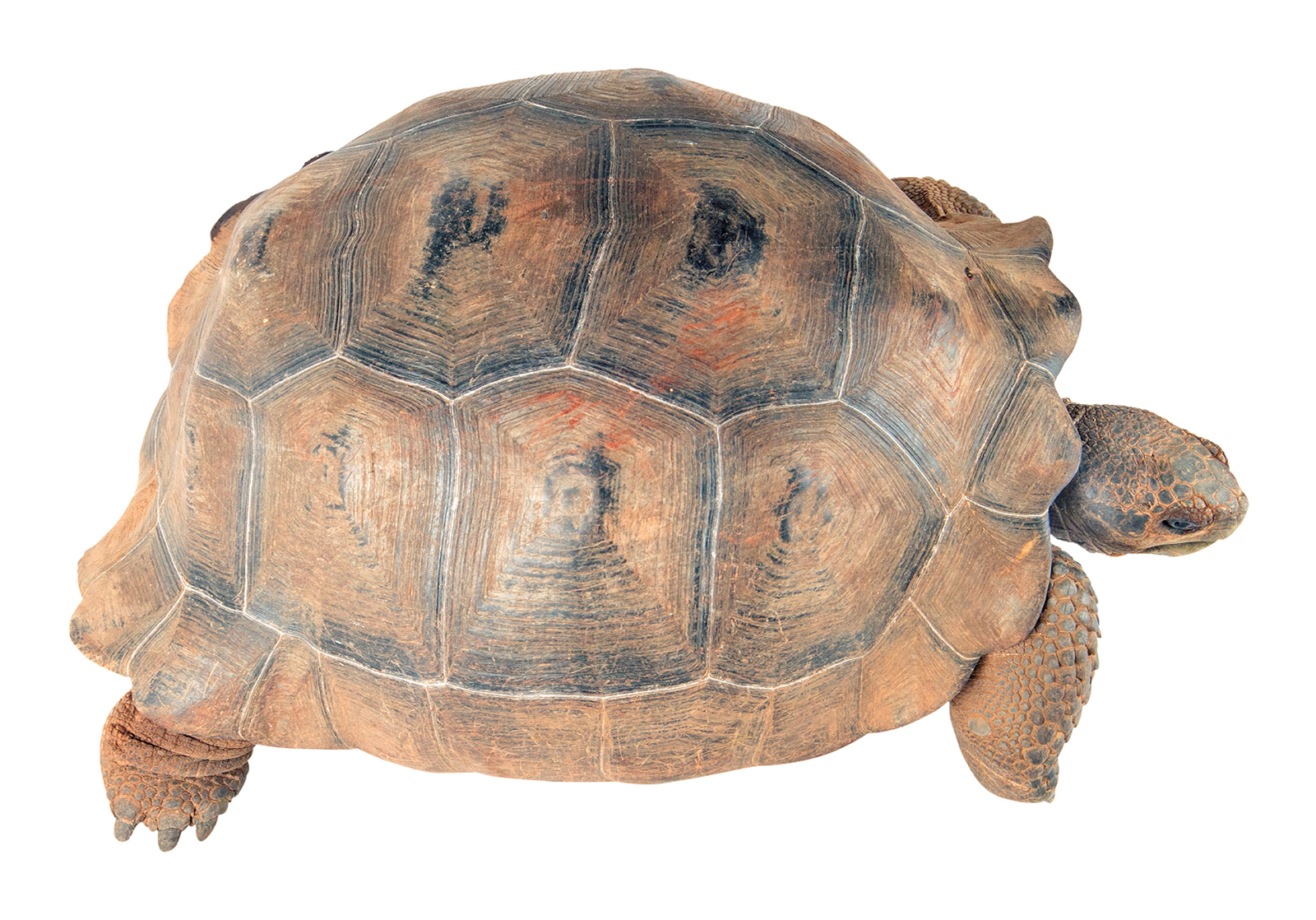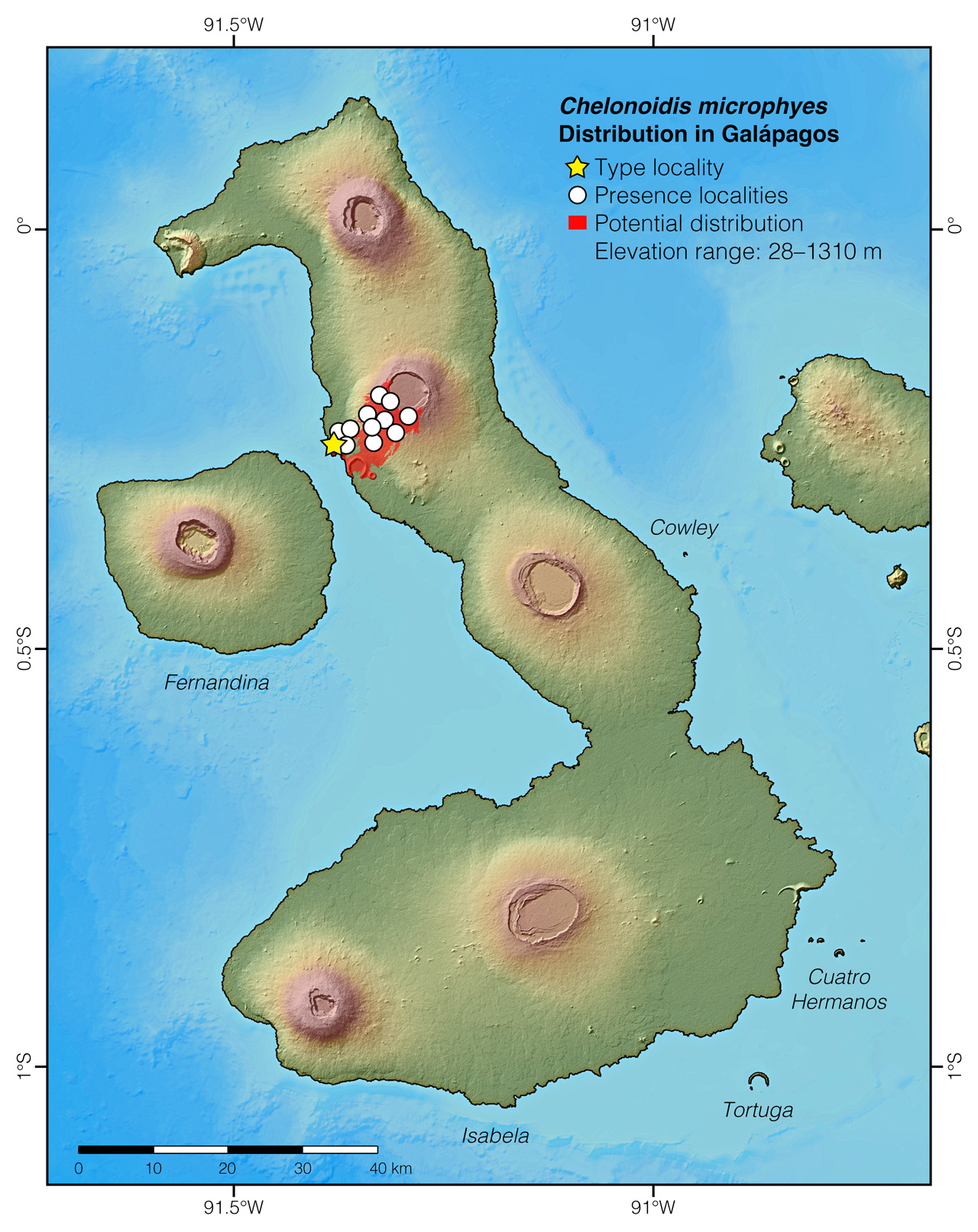Darwin Volcano Giant-Tortoise |
Reptiles of Ecuador | Testudines | Testudinidae | Chelonoidis microphyes
Spanish common names: Galápago del Volcán Darwin, tortuga gigante del Volcán Darwin.
Recognition: ♂♂ 135 cm ♀♀ 86 cm. Chelonoidis microphyes is a giant tortoise having a domed carapace form. It is the only species of giant tortoise known to naturally occur on and along the slopes of Darwin Volcano on northern Isabela Island.
Picture: Adult male. Darwin Volcano. Galápagos, Ecuador. | |
 | |
Picture: Adult female. Darwin Volcano. Galápagos, Ecuador. | |
 | |
Picture: Subadult. Darwin Volcano. Galápagos, Ecuador. | |
 | |
Natural history: Locally common. Chelonoidis microphyes is a diurnal and terrestrial tortoise that inhabits evergreen forests, deciduous forests, and dry grasslands.1 Darwin Volcano Giant-Tortoises move mostly early in the morning and late in the afternoon and spend the hot afternoon hours in the shade.2 After heavy rains, individuals of C. microphyes wallow in muddy pools.2 At night, they sleep under shrubs.3 During the dry season, Darwin Volcano Giant-Tortoises feed mostly on cacti.2 During the rainy season, they feed primarily on grasses, leaves of trees, berries, and lichens.2,4 Males of C. microphyes fight with each other using a combination of biting, gaping, pushing, and extending their necks.5 When mating, the tortoises produce resounding guttural sounds. Females begin nesting in May–June at the end of the rainy season.2 Adults of C. microphyes are seasonally migratory.2,6 From the rim of Darwin Volcano's caldera, they descend to the grass covered slopes to exploit new vegetation after the rains.2,6
Conservation: Endangered.7 Chelonoidis microphyes is listed in this category because nearly 94% of its population disappeared in the last 180 years.7 Today, it is estimated that 500–1,000 Darwin Volcano Giant-Tortoises remain,8 but whether these numbers are increasing is unknown. Causes of the population decline include direct harvesting for food and oil by sailors and oilers, and the introduction of exotic species (including dogs, cats, goats, pigs, and rodents), which either prey on tortoise eggs and hatchlings or destroy their habitat.7,9 Another threat faced by C. microphyes is volcanic eruptions, which, in addition to directly causing mortality, destroy and fragment tortoise habitat and disrupt migratory routes.7
Distribution: Chelonoidis microphyes is endemic to an estimated 67 km2 area on the southwestern slope of Darwin Volcano. Galápagos, Ecuador.


Etymology: The generic name Chelonoidis comes from the Greek word chelone (meaning “tortoise”).10 The specific epithet microphyes, which comes from the Greek words mikros (meaning “small”) and phyes (meaning “fully-grown”),10 refers to the holotype (the single specimen upon which the original description of the species was based), which had a carapace length of only 57.2 cm and which Albert Günther believed was a fully grown male.11
See it in the wild: Individuals of Chelonoidis microphyes can be seen with ~20% certainty at Tagus Cove, a tourism site near the base of Darwin Volcano on Isabela Island.
Authors: Alejandro ArteagaaAffiliation: Fundación Khamai, Reserva Arlequín, Ecoruta Paseo del Quinde km 56, Santa Rosa de Mindo, Pichincha 171202, Ecuador. and Juan M GuayasaminbAffiliation: Laboratorio de Biología Evolutiva, Universidad San Francisco de Quito (USFQ), Quito, Ecuador.,cAffiliation: Galapagos Science Center, Galápagos, Ecuador.,dAffiliation: Centro de Investigación de la Biodiversidad y Cambio Climático, Universidad Tecnológica Indoamérica, Quito, Ecuador.
Academic reviewers: Adalgisa Caccone.
Photographers: Jose VieiraaAffiliation: Tropical Herping (TH), Quito, Ecuador.,eAffiliation: ExSitu, Quito, Ecuador.
How to cite? Arteaga A, Guayasamin JM (2020) Chelonoidis microphyes. In: Arteaga A, Bustamante L, Vieira J (Eds) Reptiles of Ecuador: Life in the middle of the world. Available from: www.reptilesofecuador.com
Literature cited:
- Field notes, Reptiles of Ecuador book project.
- Heller E (1903) Papers from the Hopkins-Stanford Galápagos Expedition, 1898-1899. XIV. Reptiles. Proceedings of the Washington Academy of Sciences 5:39–98.
- Field notes of Washington Tapia.
- Slevin JR (1935) An account of the reptiles inhabiting the Galápagos Islands. Bulletin of the New York Zoological Society 38: 3–24.
- Schafer SF, Krekorian CO (1983) Agonistic behavior of the Galápagos tortoise, Geochelone elephantopus, with emphasis on its relationship to saddle-backed shell shape. Herpetologica 39: 448–456.
- Pritchard PCH (1996) The Galápagos tortoises. Nomenclatural and survival status. Chelonian Research Monographs 1: 1–85.
- Cayot LJ, Gibbs JP, Tapia W, Caccone A (2018) Chelonoidis microphyes. The IUCN Red List of threatened species. Available from: www.iucnredlist.org
- MacFarland CG, Villa J, Toro B (1974) The Galápagos giant tortoises (Geochelone elephantopus). Part II: Conservation methods. Biological Conservation 6: 198–212.
- Swingland IR (1989) Geochelone elephantopus. Galápagos giant tortoises. In: Swingland IR, Klemens MW (Eds) The conservation biology of tortoises. Occasional Papers of the IUCN Species Survival Commission (SSC), Gland, 24–28.
- Brown RW (1956) Composition of scientific words. Smithsonian Books, Washington, 882 pp.
- Günther A (1875) Description of the living and extinct races of gigantic land-tortoises. Philosophical Transactions of the Royal Society B 165: 251–284.